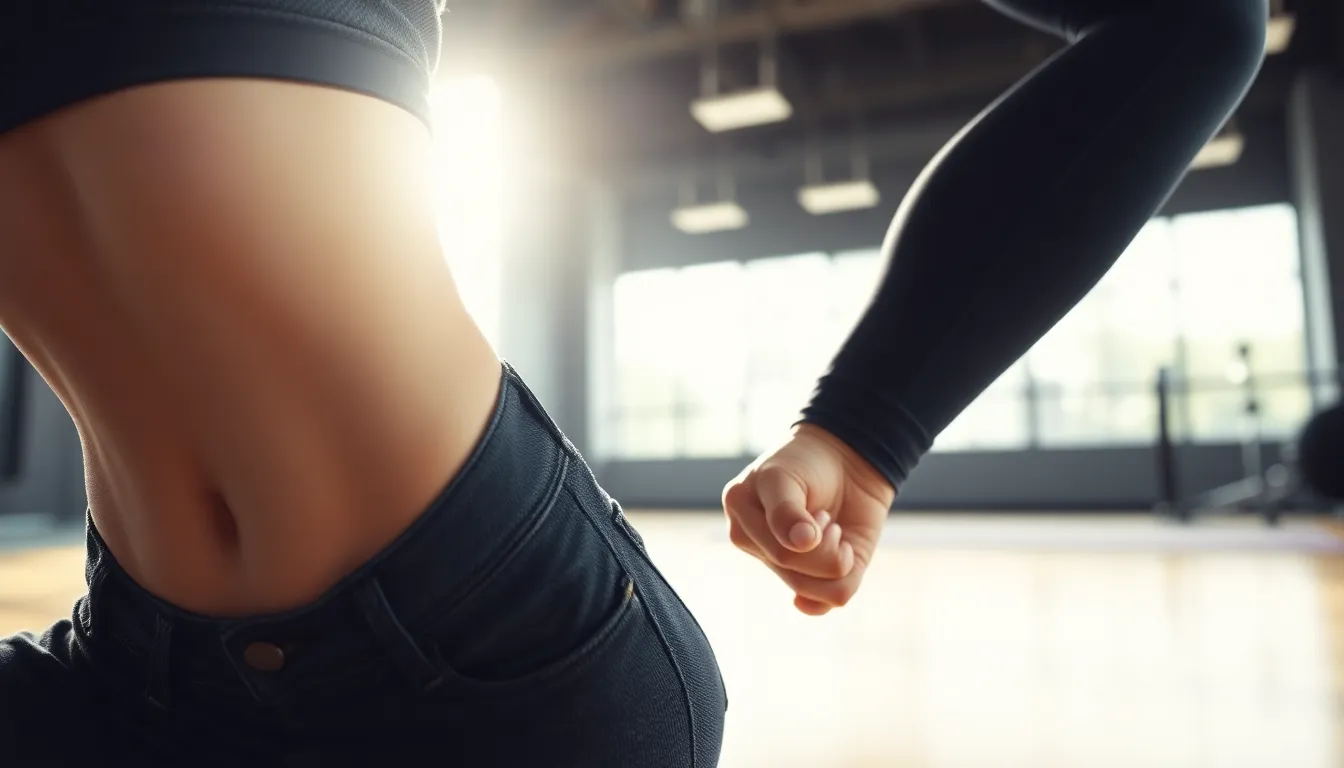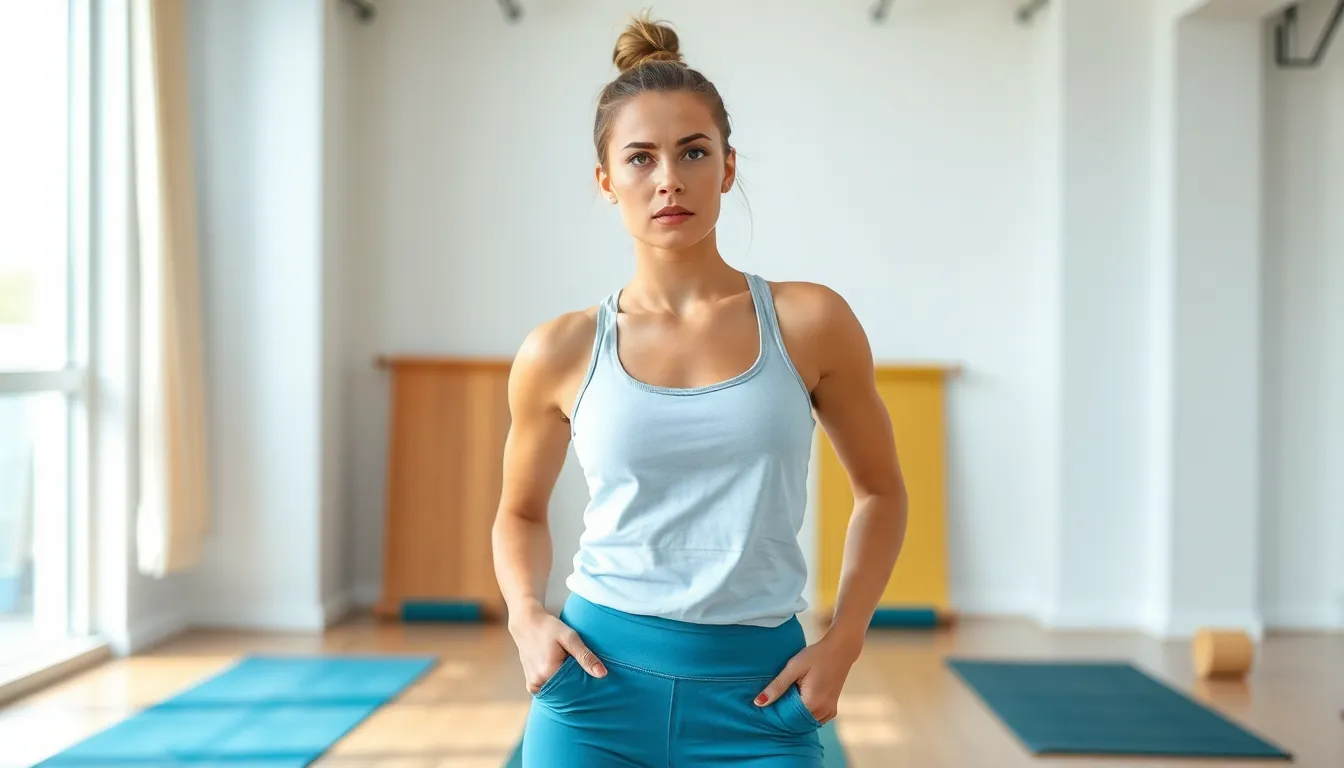Picture this: you’re going about your day when suddenly, you feel a sharp sting in a very unexpected place. Yep, we’re talking about a tear at the top of your buttocks crack. It’s not exactly a topic for polite dinner conversation, but trust us, it’s more common than you think. Whether it’s from an ill-fitted pair of jeans or an enthusiastic yoga session, this little mishap can turn your day from fabulous to flat-out uncomfortable.
Table of Contents
ToggleUnderstanding Tear At Top Of Buttocks Crack
Experiencing a tear at the top of the buttocks crack often leads to discomfort and irritation. Commonly, poor-fitting clothing contributes to this issue. Clothing like tight jeans or improper athleisure may exacerbate the problem during physical activities. Vigorous movements, especially in yoga or exercise, also play a role in causing tears.
Symptoms may include pain, skin irritation, or even bleeding in severe cases. Skin integrity diminishes due to friction and tension, making this area vulnerable. Unaddressed, a tear can lead to further complications, including infections or chronic discomfort. Individuals may feel embarrassed discussing this issue even though it’s relatively common.
Treatment options include keeping the area clean and using topical ointments to promote healing. Consulting a healthcare professional is advisable if symptoms persist. Prevention methods involve selecting appropriate clothing that provides adequate support without being restrictive. Staying mindful of body mechanics during activities also helps minimize strain on this sensitive area.
Recognizing symptoms early enhances recovery potential. Prioritizing comfort and fit in clothing choices reduces the risk of occurrence. Addressing this issue openly can foster better understanding and solutions for those affected.
Causes And Risk Factors

Tears at the top of the buttocks crack occur due to several factors. Understanding these causes and risks can facilitate effective prevention and treatment.
Common Causes
Poorly fitting clothing frequently contributes to this issue. Tight jeans or athleisure can cause friction during movement. Vigorous physical activities also play a role, particularly exercises involving straining or stretching like yoga or weightlifting. Skin irritation may arise from sweat accumulation, leading to tearing in sensitive areas. Additionally, sudden weight changes affect skin elasticity, making it more susceptible to injury. Recognizing these common causes promotes better choices in daily wear and activity.
Risk Factors To Consider
Several risk factors increase the likelihood of experiencing a tear. Excess weight places added stress on skin and tissue, heightening vulnerability. Moreover, age affects skin elasticity, making older individuals more prone to injuries. Previous skin conditions, such as dermatitis or eczema, weaken the protective barrier of the skin. Genetics also influence skin strength and resilience, increasing susceptibility to tearing. Monitoring these risk factors encourages proactive measures to maintain skin integrity during physical activities.
Symptoms And Diagnosis
Awareness of symptoms and prompt diagnosis play essential roles in managing tears at the top of the buttocks crack. Recognizing the signs early significantly aids in effective treatment.
Recognizing Symptoms
Individuals may experience various symptoms, including localized pain, sensitivity, or discomfort in the affected area. Skin irritation can manifest as redness or swelling, indicating inflammation. Some might notice bleeding, especially if the tear is deeper. Feeling tenderness during physical activities is common. Discomfort increases particularly when sitting or moving. Identifying these symptoms early helps in seeking appropriate treatment.
Diagnostic Procedures
Healthcare professionals utilize several methods to diagnose tears effectively. A thorough physical examination reveals the extent of the injury. During the assessment, doctors often inquire about recent activities and clothing choices. Imaging tests, such as ultrasound, may be used to identify deeper tissue damage. If complications arise, further tests ensure comprehensive evaluation. Prompt diagnosis allows for timely intervention, reducing the risk of complications.
Treatment Options
Addressing a tear at the top of the buttocks crack involves both home remedies and professional treatments that can alleviate discomfort and promote healing.
Home Remedies
Keeping the area clean plays a crucial role in recovery. After cleansing, applying an over-the-counter topical ointment can help soothe irritation and prevent infection. Furthermore, using antibacterial cream ensures that bacteria don’t complicate the healing process. Wearing loose-fitting clothing allows the skin to breathe and minimizes friction that can worsen the tear. It’s also beneficial to avoid activities that could aggravate the tear during the recovery phase. Staying hydrated and maintaining proper nutrition supports overall skin health and healing. Each of these simple steps can significantly reduce discomfort and contribute to faster recovery.
Professional Treatments
Consulting a healthcare professional becomes essential if symptoms persist or worsen. A doctor might recommend prescription ointments or medicated creams for severe irritation or pain. In some instances, injections may be necessary to relieve inflammation and facilitate healing. Physical therapy can also aid in restoring mobility and addressing any underlying issues that contributed to the tear. If complications arise, such as infection, antibiotics may be prescribed to address the concern promptly. Regular follow-up appointments ensure that recovery progresses smoothly and alterations in treatment can be made as needed.
Prevention Strategies
Choosing the right clothing plays a crucial role in preventing tears at the top of the buttocks crack. Opt for well-fitted garments that do not restrict movement. Selecting breathable fabrics reduces moisture accumulation, which can irritate the skin.
Maintaining a healthy weight helps improve skin elasticity. Excess weight can increase friction and the risk of injury. Engaging in regular physical activity strengthens the muscles around the hips and buttocks, contributing to better support during vigorous movements.
Practicing proper body mechanics during exercises minimizes strain on the lower body. It’s advisable to use appropriate techniques while lifting heavy objects or participating in high-intensity workouts. Stretching before physical activities increases flexibility and reduces the chances of tears.
Staying hydrated contributes to overall skin health. Consuming sufficient water can maintain skin elasticity and help prevent irritation. Following a balanced diet rich in vitamins A, C, and E supports skin repair, strengthening the skin barrier.
Monitoring any changes in skin texture aids in early detection of potential issues. Noticing symptoms like redness or small tears promptly encourages immediate action. Consulting healthcare professionals for persistent discomfort ensures proper evaluation and guidance.
Incorporating gradual progression in workout routines allows the body to adapt effectively. Increasing intensity and duration slowly reduces chances of overstraining muscles. Prioritizing rest and recovery ensures adequate healing time, especially after engaging in demanding activities.
Addressing a tear at the top of the buttocks crack is crucial for comfort and overall skin health. This common issue highlights the importance of being mindful about clothing choices and physical activities. By recognizing symptoms early and opting for well-fitted attire, individuals can significantly reduce the risk of further irritation or complications.
Seeking professional advice when symptoms persist ensures effective management and recovery. Emphasizing prevention through proper body mechanics and hydration can also enhance skin resilience. Ultimately, fostering open conversations about this topic can lead to better awareness and solutions for those affected, paving the way for improved well-being and confidence.





